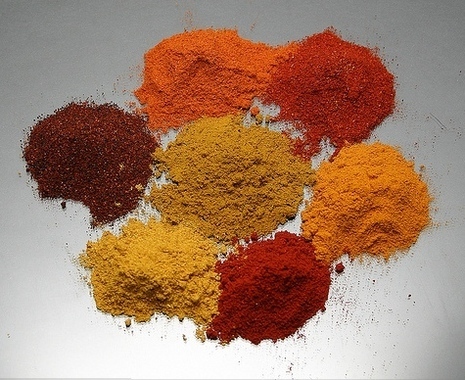Volume I resides here.
Though there is a tree called Curry Leaf that’s native to India, curry almost always refers to any number of spice blends used in Indian and Southeastern Asian cooking. There’s no standard blend, but most include cardamom, cumin, nutmeg, fennel, fenugreek, and dried chiles. Turmeric is used to give yellow curries their color, and paprika for red curries, and a combination of both for orange-colored curries. Unless your quite accustomed to curry powders, it would be best to buy mild or sweet curry powders that contain no salt, and add heat and salt as you please.
Among the more popular varieties are: Sate (Indonesia), Vindaloo (hot!), Garam Masala (used as a basis for most Indian curry dishes), Sweet Curry (usually in yellow), Tandoori (used for sauces, mostly for chicken), and Rogan Josh (spicy, and complimentary to lamb).
 Nutmeg
NutmegA dried seed of an evergreen tree native to the Maluku Islands (often called the spice islands) of what is now Indonesia. Its warm flavor is essential in baking, barbecue sauces, and the flavors of the holidays. After dried, the papery hull is ground into the spice Mace.
Nutmeg is the Number One spice that must be purchase whole, and grated fresh. When kept in a cool place, the whole kernels will last forever, unlike pre-ground nutmeg, which loses its flavor in a matter of weeks. Specialty nutmeg graters are available, but a rasp-style grater, like a Microplane, is just as ideal.
Uses: Useful in baking, sauces, and add a pinch to cooked greens (such as spinach) or cream sauces, like béchamel or ‘alfredo’-style cheese sauces.
Cumin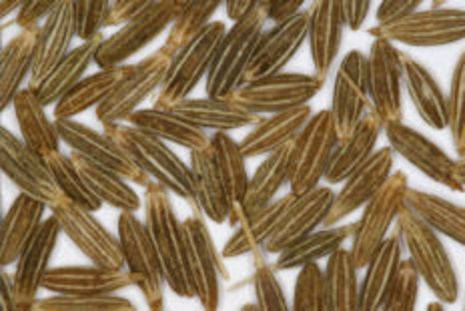
Uses: Essential in Mexican, Latin American, Indian, Middle Eastern, African, and Asian cuisines. Use sparingly in any dish you’d used coriander seeds, especially chili powders, barbecue sauces, and spice rubs. If possible, toast whole seeds and ground.
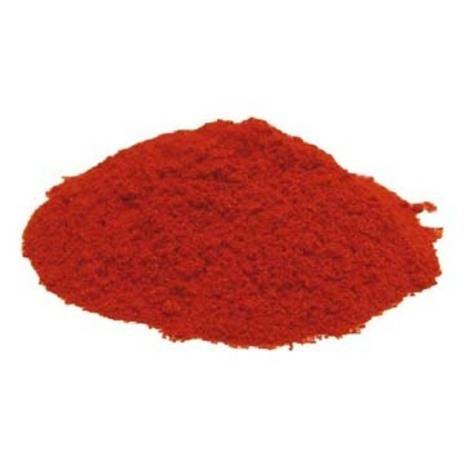
Paprika is made from dried ground paprika peppers. Look for sweet paprikas; Hungary has long produced the most complex, but paprikas from Spain are equally delightful.
Uses: Provides a vivid red color to sauces, curries and goulash, and as a garnish to tuna and chicken salads, and Turkish and Lebanese style dips, such as hommus, baba ganoush, and yogurt sauces.
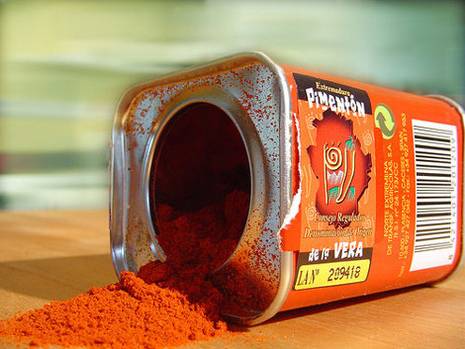 Smoked Paprika
Smoked PaprikaThis is a secret weapon to most home cooks: a quarter teaspoon makes everything tastes like bacon, with no fat, salt, or factory farms. It’s fantastic flavor and excellent color is excellent on grilled chicken, fish and vegetables, and as a base for soups, chili, sauces, spice rubs, and even salad dressings. Be careful, it’s addictive!
Uses: All things, and everything, all the time.
Saffron
Saffron are the handpick stigma of the crocus plant, and is literally the most expensive edible, by weight, on earth: more than fresh truffles, caviar, or champagne. Though the threads are red, when bloomed, they turn the dish a brilliant yellow, and provide a subtle bitter flavor. Look for Spanish saffron, or domestic brands from Pennsylvania. Be sure to buy whole strands, as the powdered varieties are usually cut with turmeric.
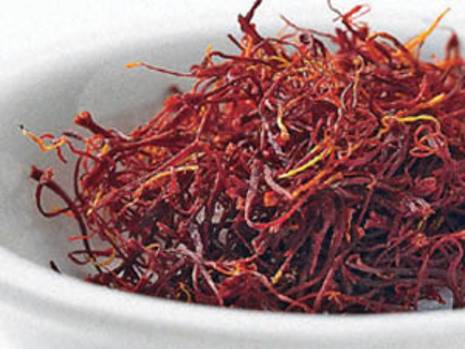
Volume II Technique: Blooming
When using ground spices, add them to hot oil or butter to intensify their flavor. If sautéing aromatics, such as onions, garlic, or celery, add them to the pan during this time. This is particularly effective when using spice mixes, like curry or chili powders.
[Special thanks to: Penzeys.com and Cook’s Illustrated No. 83 for info]
